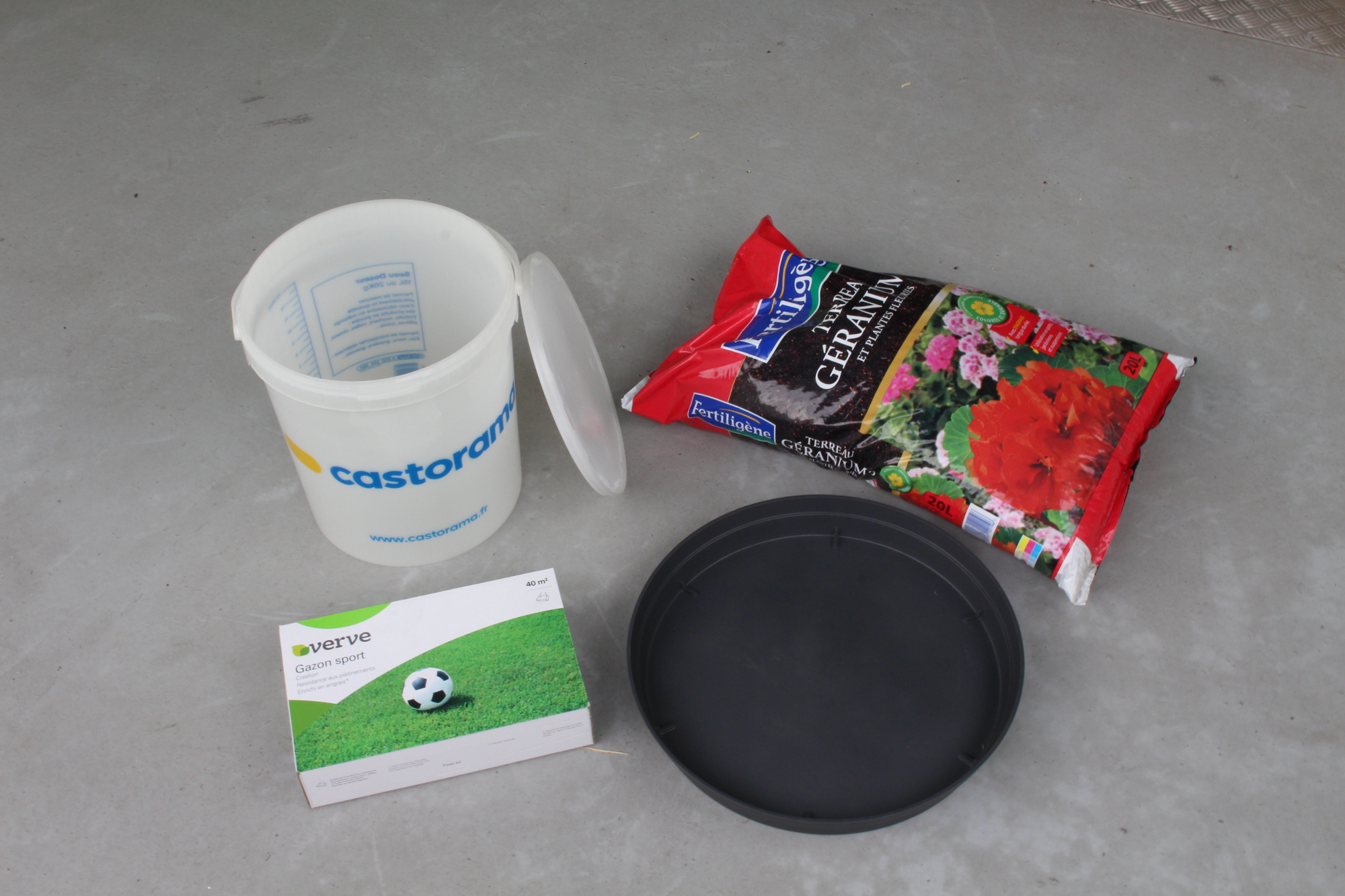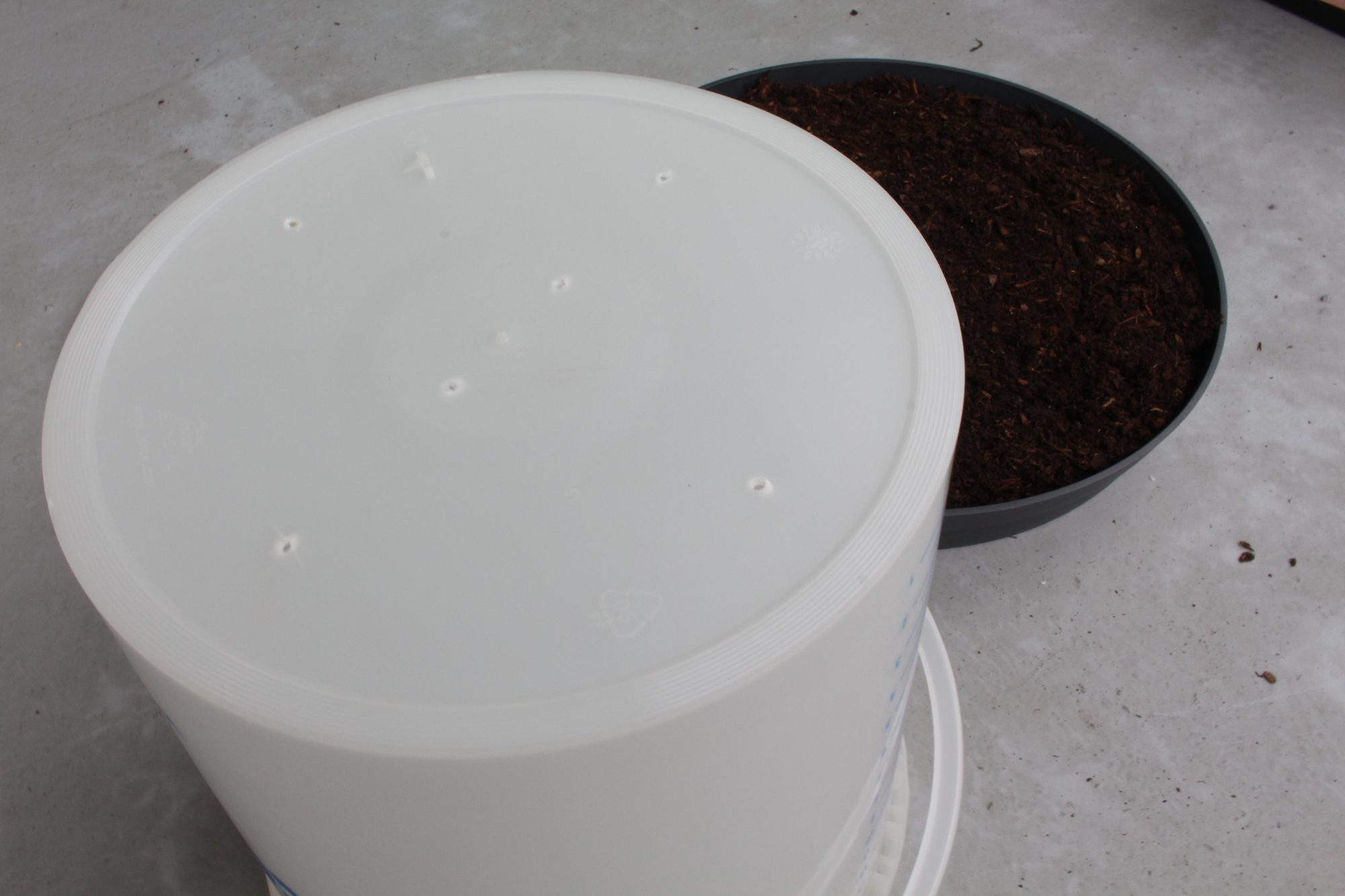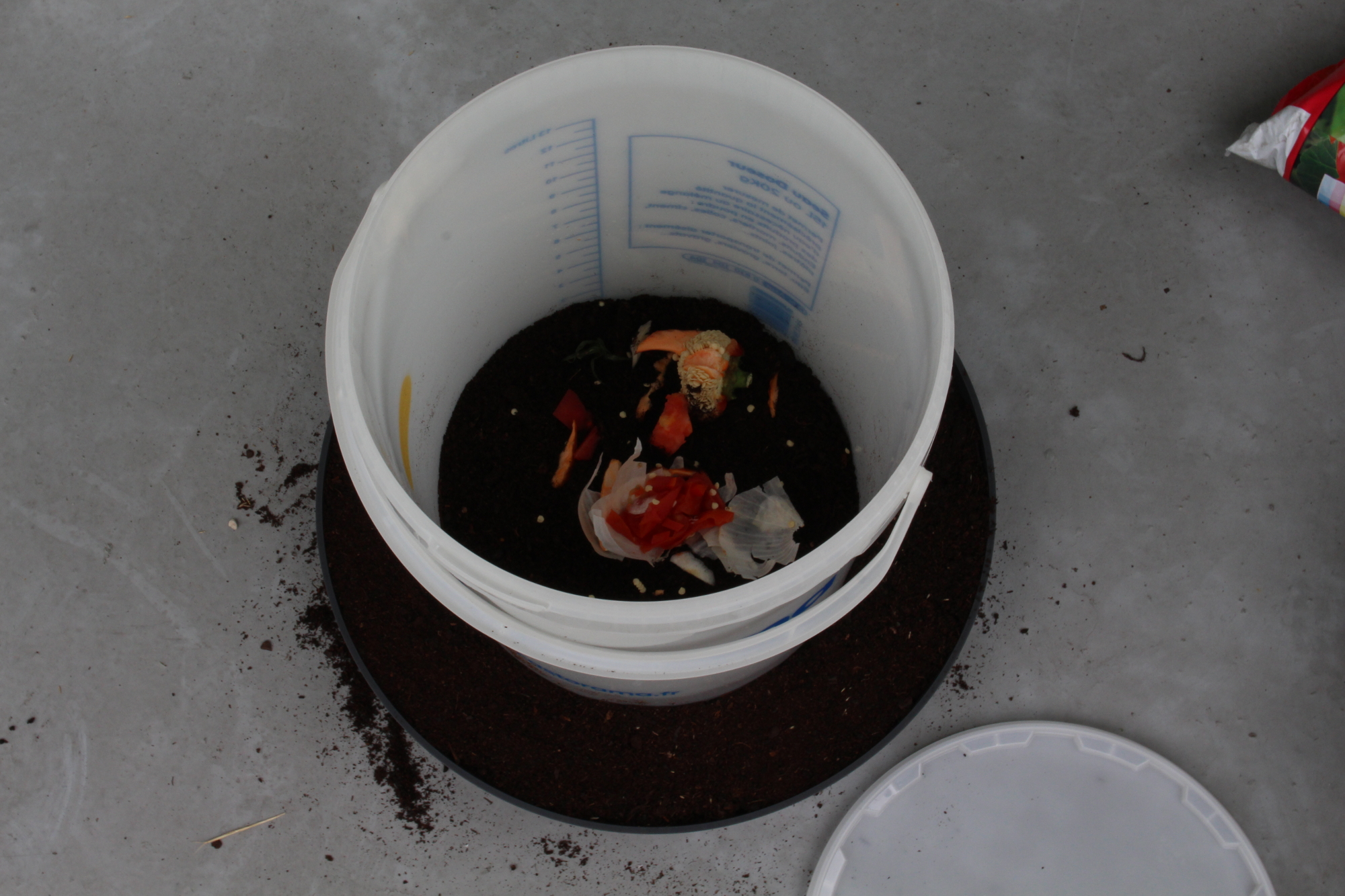Fatigué de devoir descendre une poubelle à moitié pleine parce qu’elle était trop odorante, et un peu poussé par un sentiment d’écologisme, j’ai décidé de faire mon propre compost. Oui mais … j’habite en appartement, autant dire que le bac au fond du jardin c’était perdu d’avance.
Un ami m’a donné l’idée de faire mon compost dans un seau sur la terrasse, nous avons réalisé ce petit projet ensemble. L’idée était que ce soit fonctionnel, mais aussi un peu esthétique. Voici le matériel utilisé :
- Seau de 15l (seau à mélanges, Castorama, environ 3€),
- Un dessous pour pot de fleur nettement plus large que le fond du seau (environ 7 €),
- Du terreau, suffisement pour remplir le dessous,
- Un peu de gazon à semer, ou d’autres plantes pour garnir le tour.
Dans un premier temps il faut percer le fond du saut de petits trous qui permettront au liquide généré par votre compost de s’évacuer. Puis, garnir le dessous de pot de terreau.
Posez ensuite le seau sur le lit de terreau et semez vos plantes, ici du gazon, autour. Cela permettra de décorer l’ensemble, et aussi de consommer ce que votre compost émètra dans la terre.
Vous pouvez mettre un peu de terre au fond du seau si vous le souhaitez, ça le rend plus facile à nettoyer. Entreposez ensuite le tout dans un endroit à l’abri des fortes pluies et fermez le couvercle. Vous n’aurez ainsi pas d’odeurs. Après quelques semaines, les plantes semées poussent et votre bac à compost pour balcon devient sortable.
Ça vaut ce que ça vaut, mais j’ai trouvé un compromis entre mon problème de poubelles et ma petite conscience écologique 😉 A vos outils !




